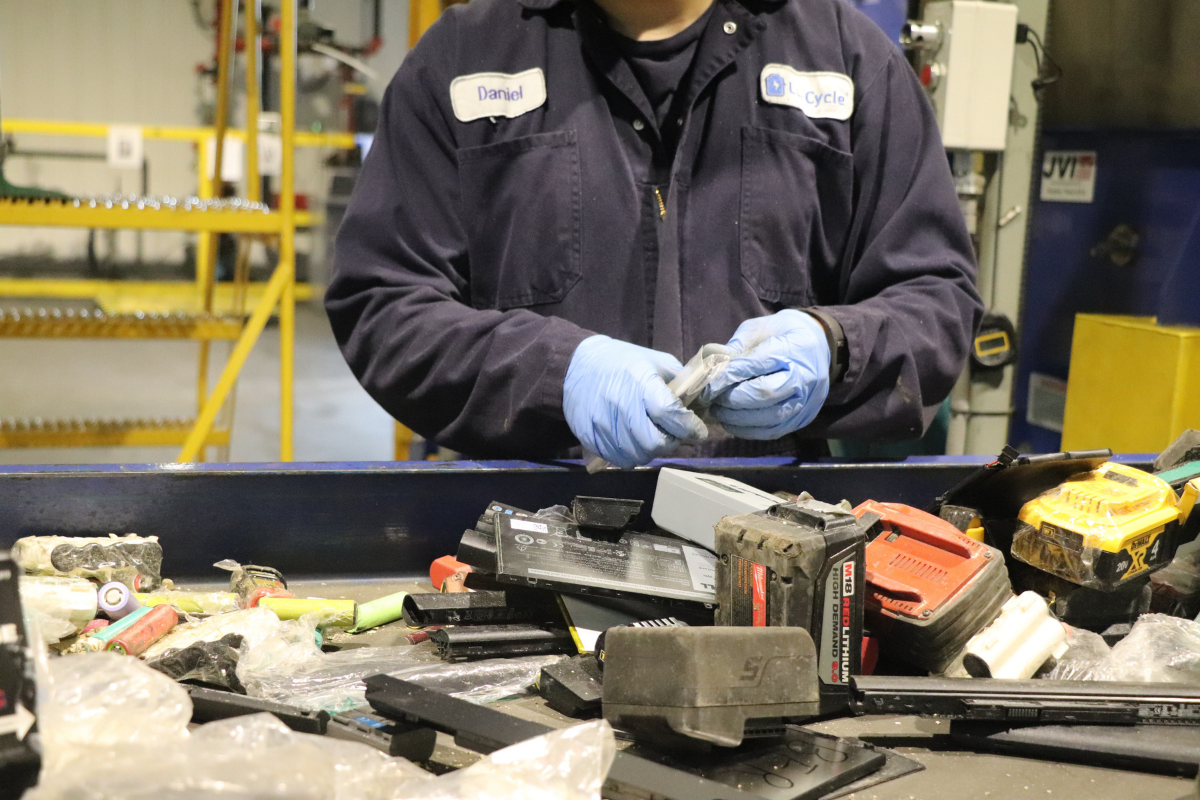



July 8, 2021



July 07, 2021
Our clean energy future relies on our ability to produce and store energy without the use of fossil fuels. Part of that solution is the sustainable management of batteries — from raw material through production, and recycling to recover and reuse those materials.
You will quickly run out of fingers and toes once you start counting the batteries in your cellphones, laptops, tablets, electric toothbrushes, remote controls, toys, games, solar-powered lights, lawn mowers, cordless power tools, electric vehicles, and more. Even our health and safety relies on battery power for heart pacemakers and smoke alarms. The average home uses somewhere between 80 and 100 batteries.
Battery contents range from benign to toxic, and abundant to rare. Your household likely has an assortment of single-use and rechargeable alkaline, nickel cadmium and nickel metal hydride batteries, as well as lithium ion. Surprisingly, 78 per cent of battery sales in Canada are still single-use.
Since July 2020, Ontario has required manufacturers and importers to manage the complete life cycle of household batteries. The Retail Council of Canada has a clear summary of the rules. Up until the end of 2022, producers are expected to make their “best effort” to manage 40 per cent of the product weight of both primary and secondary batteries. Those targets only get as high as 50 per cent in 2025.
With targets this low, despite a record high of 1.7 million kilograms of batteries recycled last year in Ontario, how many are still ending up in the landfill? Only a few communities have curbside pickup for batteries, so in Waterloo Region it is up to each of us to take dead batteries to the region’s hazardous waste building at the landfill, or find the nearest drop-off location on the call2recycle website.
Those dead batteries are sent to a recycling facility, such as the Raw Materials Company in Port Colborne. There they are sorted by type, and separated into component parts for reuse. Steel and nickel is used to produce new metals; zinc, manganese and potassium are extracted and used by local corn growers for micronutrients; paper and plastic is incinerated at a local energy-to-waste facility to offset 80 per cent of the facility’s energy needs.
Good for alkaline batteries, but the life cycle of lithium ion batteries is still a work in progress.
Manufacturers currently extract lithium or “white gold” in the “Lithium Triangle” of Bolivia, Chile and Argentina. They drill down and create huge briny evaporation ponds that are having a severe environmental impact. California’s Salton Sea may become Lithium Valley as more lithium reserves are being identified and developed worldwide.
Recycling lithium batteries is largely in its infancy, and becoming increasingly urgent as electric vehicles become the norm not the exception and we replace fossil fuels with batteries as backup power. Li-Cycle’s facility in Kingston claims a fully sustainable proprietary “spoke and hub” technology that renders lithium ion batteries inert with “no solid or liquid waste” and then processes the batteries to extract lithium, cobalt and nickel for reuse in batteries or other applications.
There is certainly no shortage of research and competition to find the perfect Goldilocks battery — one that is cheap, small and lightweight, with maximum longevity and charge capacity. It also has to be made from renewable materials and be fully recyclable.
Sandia National Laboratories lays claim to creating the world’s smallest battery, with an anode one seven-thousandth the thickness of a human hair. The anode is one of three parts to a battery; the other parts are the cathode and electrolyte.
Competition is fierce for the biggest, but it looks like the 1,200 megawatt grid storage batteries that CEP has proposed in New South Wales, Australia might be it. So far.
At the University of Waterloo, Dr. Zhongwei Chen’s Applied Nanomaterials and Clean Energy Lab is researching alternatives such as proton exchange membrane fuel cells, silicon-sulphur batteries and supercapacitors that could be part of our clean energy future.
Some are even thinking outside of the battery. Buoyancy Energy Storage Technology is looking at using pipes and anchors for wind-generated energy storage on coastal communities. You have to love the confidence of their acronym: BEST.
And we can all do our BEST to be part of the solution when we recycle ALL our batteries. It may not seem like much, but collectively it will reduce the need to extract more and more of our planet’s diminishing natural resources.
